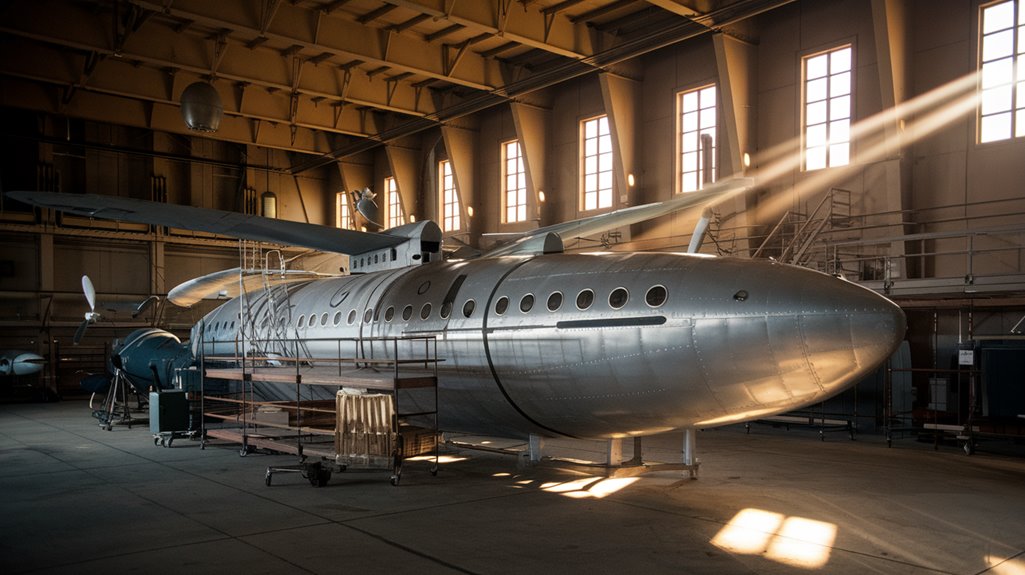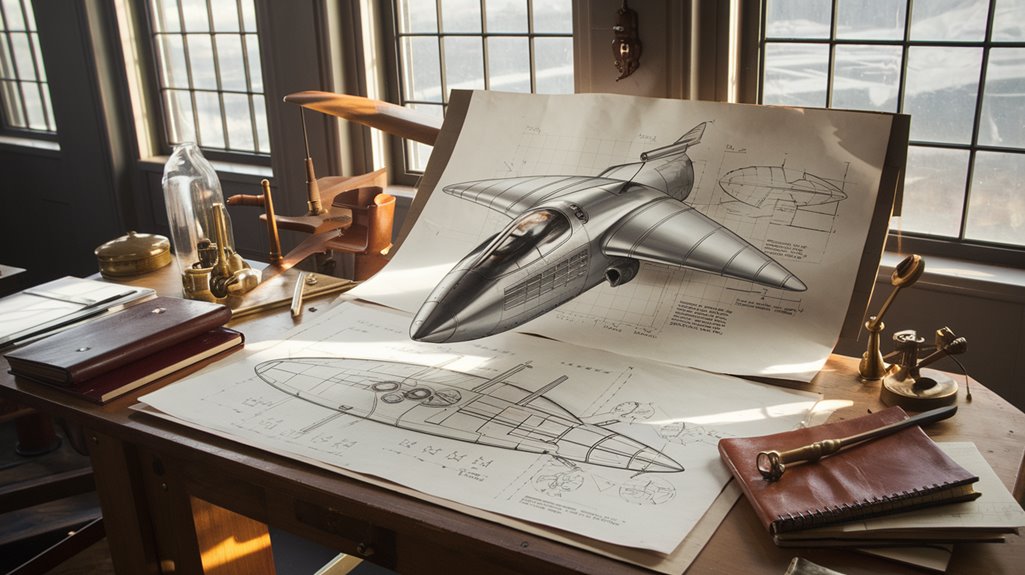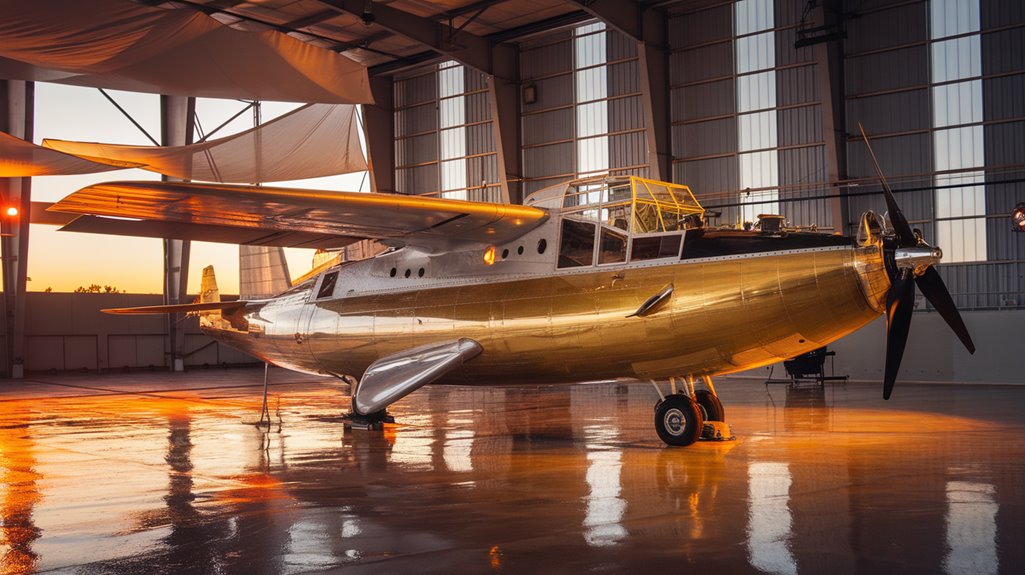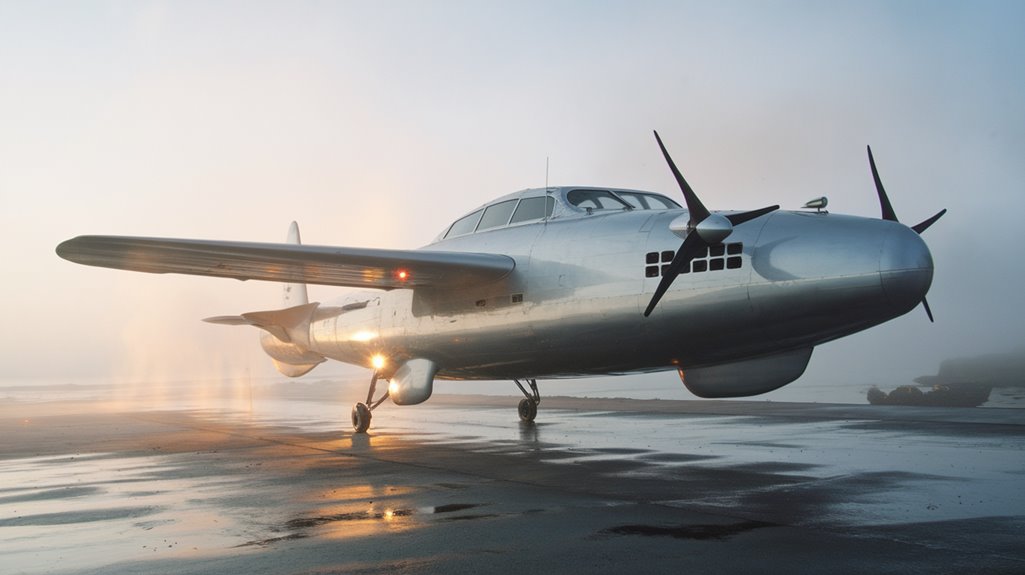The Impossible Dream of a Flying Submarine
Like Icarus soaring toward the sun, you've probably dismissed the concept of a flying submarine as pure fantasy. Yet, what was once confined to science fiction and military daydreams is emerging as a tangible possibility. You'll find that modern engineering has brought us to the cusp of achieving this dual-domain breakthrough. As defense agencies pour resources into developing these hybrid vessels, you're about to discover why the impossible is becoming inevitable.
The Origins of a Bold Military Vision

While military innovation often pushes technological boundaries, few concepts have been as ambitious as the flying submarine. In the mid-1930s, you would've found Russian military researcher B. P. Ushakov pursuing this bold vision with groundbreaking designs that challenged conventional thinking.
Ushakov's Innovation centered on a unique aircraft that combined a manta-ray wing with a fish-like body, featuring a conning tower and three radial engines. His design promised naval superiority through an impressive 800-kilometer range at 200 km/h in the air, while also diving to 50-meter depths at 3 knots underwater. The crew had to retreat to separate compartments when transitioning from air to underwater operation. Similar to Ushakov's concept, Convair's 1962 proposal demonstrated the lasting influence of his revolutionary design approach.
You can imagine the strategic advantage: a vessel capable of attacking enemy ships and maneuvering through minefields with unprecedented versatility. However, the design faced significant hurdles, particularly in protecting the engines from corrosive saltwater.
Breaking Down the Engineering Marvel
Building upon Ushakov's pioneering vision, modern engineers face two competing forces in creating a flying submarine: the need for lightweight structures that enable flight and robust hulls that withstand crushing ocean depths.
The engineering innovations you'll find in current designs tackle this challenge through sophisticated compartmentalization and dual-purpose systems. Special operators can deploy covertly underwater during missions while maintaining complete operational secrecy.
You'll notice remarkable aquatic aerodynamics at work, with variants featuring wingspans up to 109 feet and specialized membrane-filled wings. The vehicle requires fly-by-wire control for managing its complex twin-flap surfaces during flight operations.
The designs incorporate turbofan motors for air travel and electric propulsion for underwater movement, reaching speeds of 6 knots when submerged.
The ballast system shifts between flight and submersion modes, while inflatable floats provide essential buoyancy control.
These technical solutions enable a 750-pound payload capacity and impressive operational range of 800 air miles.
Navy's Pursuit of Dual-Domain Warfare
Since the early 20th century, naval forces worldwide have pursued the dream of combining submarine and aircraft capabilities into a single platform.
Today's integration efforts align with Multi-Domain Operations, encompassing air, land, space, maritime, and cyber domains simultaneously.
You can trace this ambitious quest through various experiments, from Britain's modified M-class submarine to Japan's Sen-Toku submarines carrying Seiran bombers.
Today's pursuit of dual-domain warfare has evolved considerably with modern technology.
You'll find the U.S. Navy leading innovative projects like the Cormorant, designed for submarine-launched drone operations.
The integration of aircraft capabilities with submarine platforms now aligns with broader multi-domain operations, creating complex challenges for adversaries.
Modern submarines rely on dynamic content rendering through advanced computer systems to process operational data efficiently.
As you explore these developments, you'll notice how DARPA and the Naval Surface Warfare Center continue pushing boundaries, combining artificial intelligence with advanced materials to enhance dual-domain warfare capabilities.
Technical Hurdles and Design Limitations
Despite decades of engineering advances, creating a viable flying submarine faces fundamental physical contradictions that challenge even modern designers.
You'll find that weight management presents the most significant obstacle – aircraft require lightweight structures to fly efficiently, while submarines need heavy, pressure-resistant hulls to operate underwater.
The complexity of propulsion systems adds another layer of difficulty.
You'd need engines that can function in both air and water, requiring intricate sealing mechanisms and specialized dual-mode designs. At Carderock Division, designers proposed a system using twin turbofans for air travel while incorporating separate electric thrusters for underwater propulsion.
While turbofans could provide aerial thrust and electric thrusters could handle underwater movement, integrating these systems creates substantial engineering challenges.
Control systems must also adapt to two radically different environments, demanding sophisticated computer assistance for pilots managing the shift between domains.
From Drawing Board to Reality: Progress Reports

While the concept of flying submarines once seemed purely fictional, recent developments have brought this ambitious vision closer to reality. Chinese researchers have successfully tested a prototype that can both float and fly, reaching speeds of 120 kilometers per hour with its unique design of four propellers and folding wings.
You'll find promising developments in amphibious technology beyond flying submarines, too. Swiss startup Jekta's PHA-ZE 100 represents a significant step forward, offering an all-electric solution for coastal transport with one hour of flight endurance. The prototype submarines faced early challenges as they could not achieve direct water takeoff due to wave interference. The PHA-ZE 100's advanced design allows it to operate in waves up to 1.2m high.
While the U.S. Navy's earlier studies proved the concept's feasibility, today's progress is turning theoretical possibilities into tangible results. These advancements aren't just experimental – they're attracting serious investment, as evidenced by MEHAIR's order of 50 electric amphibious aircraft from Jekta.
The Future of Amphibious Aviation
Three major trends are shaping the future of amphibious aviation: military strategic shifts, commercial innovation, and technological breakthroughs.
You'll see these reflected in projects like DARPA's Liberty Lifter and China's AG-600, which showcase how amphibious innovations are transforming military capabilities in the Western Pacific. The Liberty Lifter's cargo capacity requirements for military vehicles demonstrate the growing demand for sea-based heavy transport solutions.
 HU-16 Albatross family has recently secured FAA type certification, marking a significant step forward in commercial amphibious aviation.
HU-16 Albatross family has recently secured FAA type certification, marking a significant step forward in commercial amphibious aviation.
These aircraft offer cost-effective solutions for remote access and firefighting while reducing the environmental impact of traditional infrastructure.
The technology's versatility and adaptability to challenging maritime conditions make it increasingly attractive for both military operations and civilian applications, from humanitarian assistance to cargo transport.










